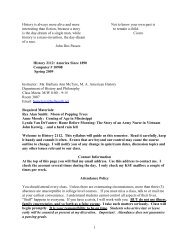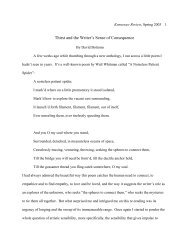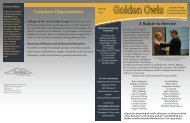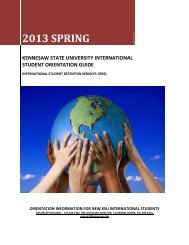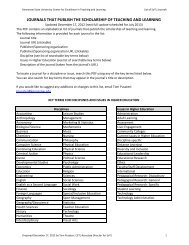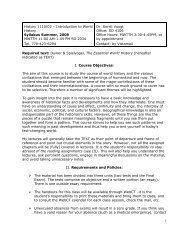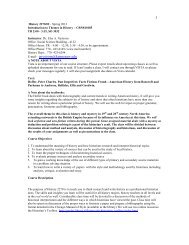Food, Gender and Cultural Hegemony - Kennesaw State University
Food, Gender and Cultural Hegemony - Kennesaw State University
Food, Gender and Cultural Hegemony - Kennesaw State University
You also want an ePaper? Increase the reach of your titles
YUMPU automatically turns print PDFs into web optimized ePapers that Google loves.
Cualli 136<br />
beverage (Soustelle, 1961, 149). This ethic of frugality is demonstrated in the Codex<br />
Mendoza in which half a tortilla per day is prescribed for a child at three years of age,<br />
increasing to a whole tortilla for a four or five-year-old. From age six to age twelve<br />
one <strong>and</strong> one-half tortillas per day was appropriate (Codex Mendoza 72-77)<br />
The tortilla, "the culinary soul of Mesoamerica" was prepared with just three<br />
simple utensils: a cazuela (earthenware pot), a metate (grinding stone), <strong>and</strong> a comal<br />
(griddle) (Pilcher 11). The corn was soaked all night in mineral lime, which loosened<br />
the indigestible husks <strong>and</strong> added important nutrients. It was then cooked with lime in<br />
the cazuela. When the corn was soft, the cook knelt <strong>and</strong> laboriously ground the wet<br />
corn on a metate, a three-legged grinding stone. The smooth dough was patted into<br />
thin disks <strong>and</strong> toasted briefly on the comal. The tortilla could be wrapped around meat<br />
or vegetable fillings to form a taco. It was useful as an eating utensil or a plate. A<br />
family squatted around the hearth on their mats <strong>and</strong> quickly ate their simple meal.<br />
Most often the man of the house would carry his lunch with him <strong>and</strong> eat at his work<br />
(Soustelle 149).<br />
Dinner in the houses of the rich was much more elaborate, with many <strong>and</strong><br />
varied dishes. More than thirty dishes were prepared daily for Moctezuma. Before<br />
eating, the emperor chose whatever pleased him--turkeys, pheasants, partridges,<br />
crows, wild or tame ducks, deer, wild boars, pigeons, hares, rabbits. He sat down<br />
alone on a low chair <strong>and</strong> a table was put in front of him, with a white tablecloth <strong>and</strong><br />
napkins He was shielded by a screen <strong>and</strong> ate from black Cholula pottery (Diaz del<br />
Castillo 225-26). For festive banquets tamales were indispensable. Archeological<br />
evidence suggests tamales may have been consumed as early as Teotihuacan between<br />
c.250BC <strong>and</strong> AD 750. Tamales were made by spreading corn dough inside a husk,<br />
adding chile sauce <strong>and</strong> some bits of meat or beans, folding the packages up, sealing<br />
them <strong>and</strong> steaming them in an olla or large pot.<br />
Two beverages were important to Nahua cuisine: pulque <strong>and</strong> chocolate. The<br />
alcoholic beverage pulque was manufactured by fermenting the sap of the maguey or<br />
agave plant. This drink had an important religious role, as an offering to the gods,<br />
including the gods of drink <strong>and</strong> drunkenness. But the ancient Mexicans primarily<br />
[Type text]



